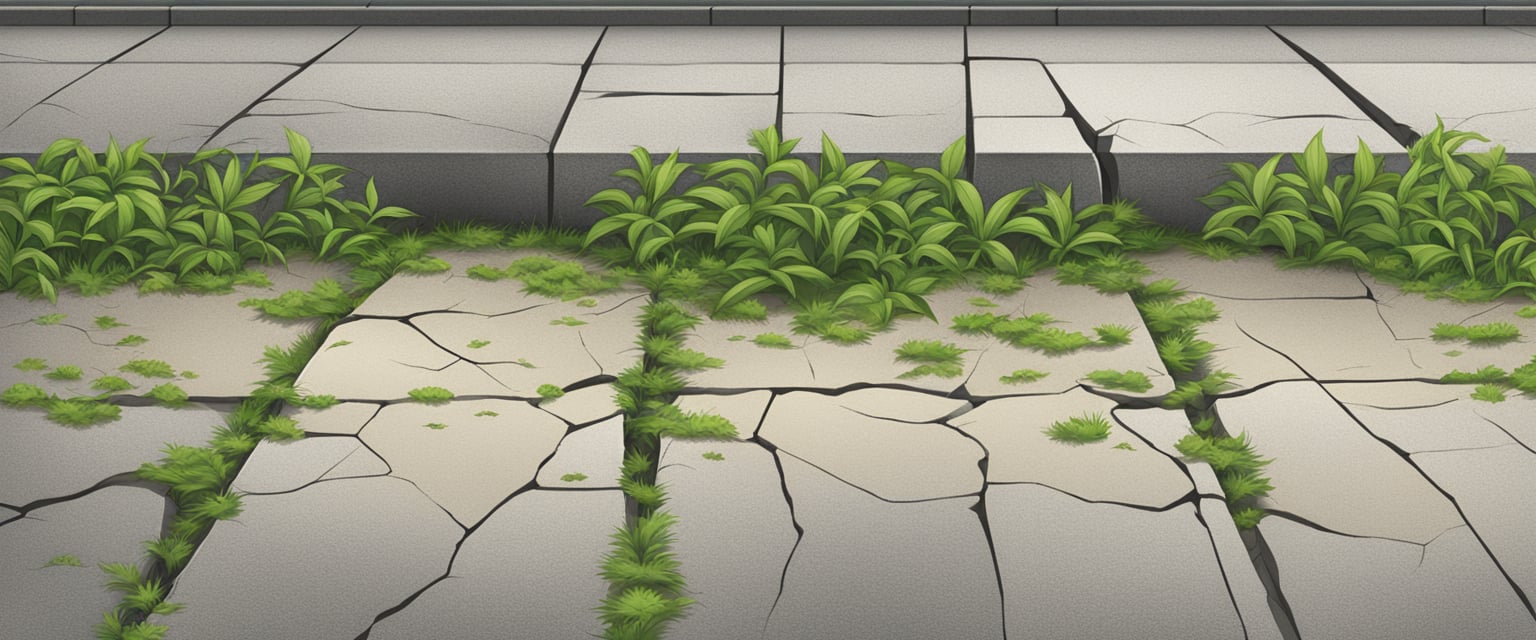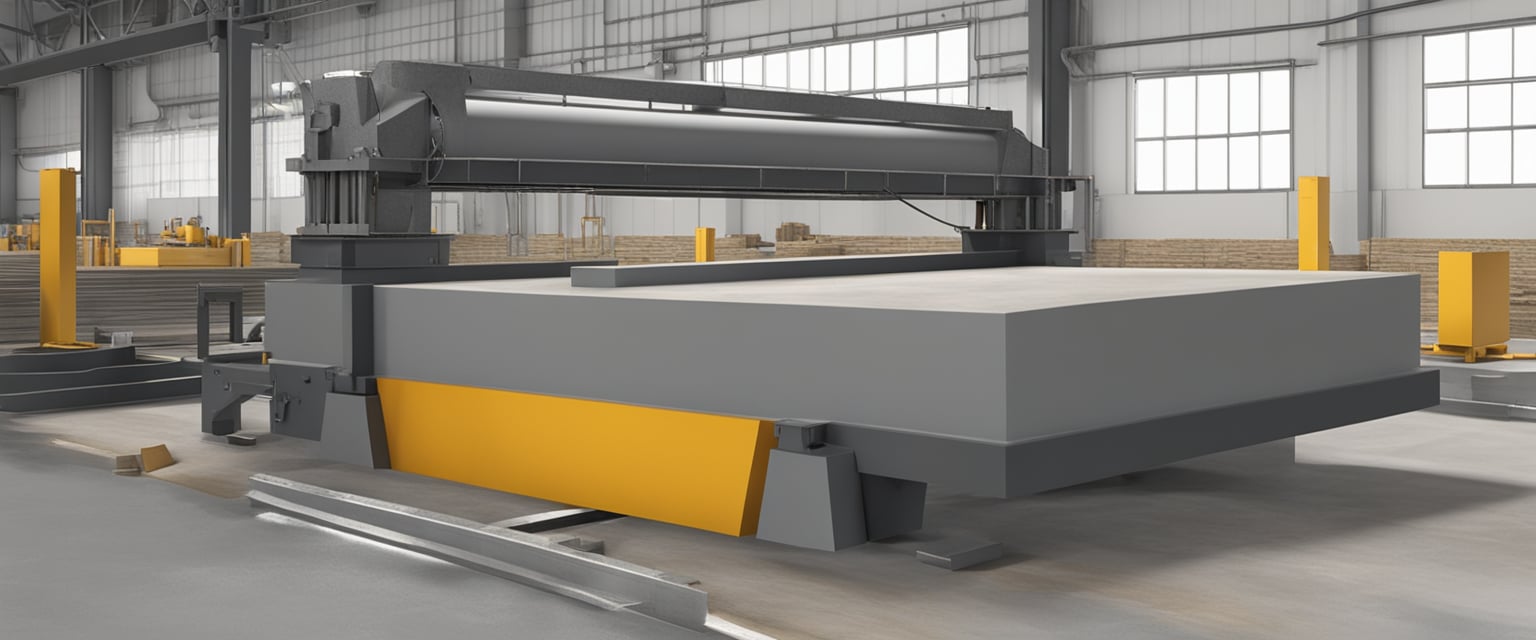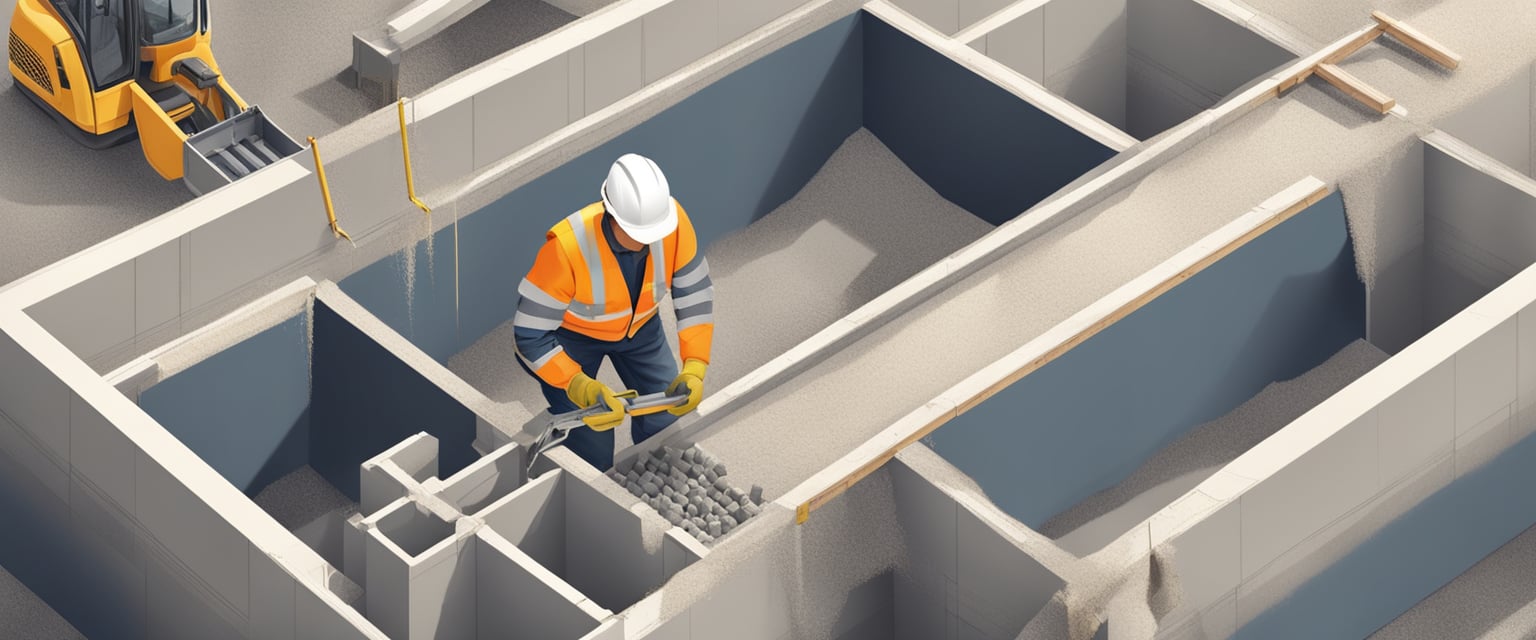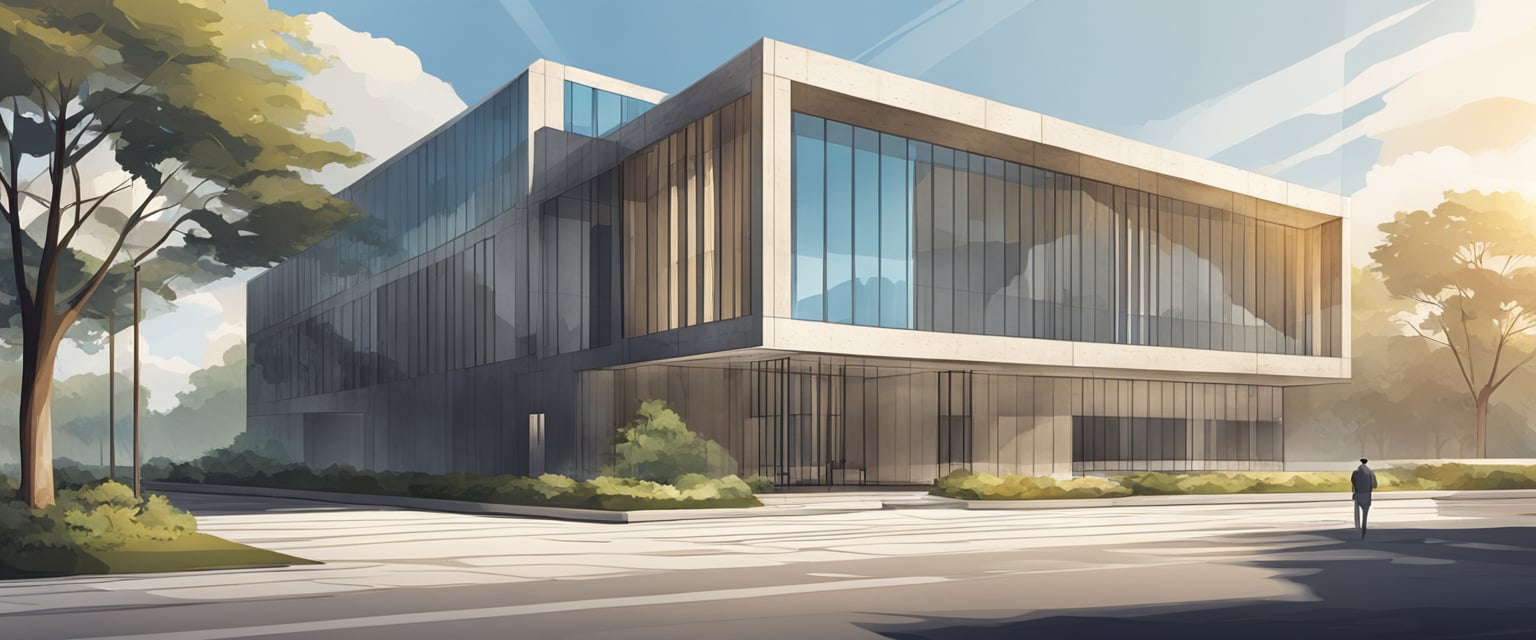Concrete Durability: Enhancing Longevity in Construction
Concrete is recognized as a fundamental building block in construction due to its robust characteristics and adaptability. As the most widely used building material globally, its significance cannot be overstated. Its composition is simple yet effective—it consists of aggregate bonded together with fluid cement that gradually hardens over time. The careful selection and proportioning of these raw materials define the concrete’s quality and properties, which in turn determine its suitability for various applications.

The versatility of concrete is seen in its numerous forms and types, each with distinct properties that cater to different needs in construction. From high-strength concrete for structural elements to lightweight or porous types for specialized functions, the material’s adaptability makes it indispensable across architectural and engineering projects. Moreover, concrete plays a vital role in today’s environmentally conscious world. Not only does it have a long lifespan, reducing the need for frequent replacement, but advancements in its composition and production methods continually seek to minimize its carbon footprint.
Key Takeaways
- Concrete’s widespread use in construction is attributed to its strength, durability, and versatility.
- The performance and applications of concrete depend on its composition and the quality of its constituent materials.
- Advancements in concrete technology focus on improving environmental impact and meeting diverse construction needs.
Composition of Concrete
Concrete is meticulously engineered for strength and durability. The key ingredients include cement, typically Portland cement, and alternatives like pozzolana, along with precisely proportioned aggregates and water. Additives are included to tailor the properties of the resulting concrete for various applications.
Cement and Alternatives
Cement acts as the binder in concrete. Portland cement is the most common type, known for its general use in a variety of concrete projects. Pozzolana and fly ash can be used as supplementary cementitious materials, which may improve concrete’s performance or reduce costs. Some mixtures might also include lime to enhance workability or calcium chloride as an accelerator.
Aggregates
Aggregates provide concrete with its structure and bulk. Differences in mix design result from varying the proportions of fine aggregate, like sand, and coarse aggregate, including stone or gravel. The quality and proportion of these materials are pivotal in determining the final strength and texture of concrete.
Water and Additives
Water initiates the chemical reaction that makes cement bind the aggregates together. The ratio of water to cement is critical for the concrete’s final strength and quality. Admixtures and additives like superplasticizers may be employed to enhance properties such as setting time, workability, strength, and moisture resistance. They help in achieving the desired consistency and performance of the concrete in both fresh and hardened states.
Properties of Concrete
Concrete is a composite material known for its versatility and strength, which are derived from its specific composition and the processes involved in its creation. The properties that make concrete a widely used building material include its strength parameters, workability and curing process, as well as various durability factors.
Strength Parameters
Compressive Strength: Concrete is characterized by its exceptional compressive strength, which is its ability to withstand loads that tend to reduce size. The compressive strength of concrete is influenced by factors such as the water-cementitious ratio and the quality of materials used. Typical grades of concrete, such as M20, M25, M30, etc., reflect their compressive strength in megapascals.
Tensile Strength: Although concrete is strong in compression, its tensile strength is comparatively lower and it can crack under stretching or bending. Tensile strength measures the force required to pull concrete apart and is a crucial factor in reinforcing concrete structures to improve their resilience.
Workability and Curing
Workability: The workability of concrete is a measure of how easy it is to mix, place, and finish. The slump test is commonly used to measure the consistency of concrete mix; a higher slump indicates greater workability.
Curing: After placement, concrete undergoes hydration and must be appropriately cured to reach its intended strength. Curing concrete involves maintaining adequate moisture, temperature, and time to allow the concrete to develop its properties optimally.
Durability Factors
Durability: Concrete’s durability refers to its ability to withstand various environmental conditions without significant deterioration. Factors that contribute to the durability of concrete include its permeability, resistance to freeze-thaw cycles, abrasion, and chemical attacks.
Carbonation: Concrete can undergo carbonation when exposed to carbon dioxide over time, potentially reducing its pH and leading to steel reinforcement corrosion. It is essential to consider the carbonation resistance of concrete, especially for structures at risk of exposure to CO2.
Concrete in Construction
Concrete is the cornerstone of modern construction, providing the foundation and structural components for buildings and infrastructure globally. Its versatility and durability make it a material of choice in the industry.
Role in Building Structures
In building construction, concrete’s importance is paramount. Contractors widely employ it for creating robust foundations that support the weight of entire structures. Foundations form the stable base for buildings, with concrete mixtures tailored to ensure longevity and stability. Above ground, concrete is vital for erecting columns and beams, the key structural elements that bear loads within a building. Concrete slabs serve as the primary surface for floors and ceilings, providing vast, sturdy planes that can be finished in various ways for different aesthetic and functional purposes.
Infrastructure Applications
Concrete’s role in infrastructure is extensive, forming the backbone of modern transportation systems. It is used to construct enduring bridges that connect communities and facilitate commerce. In road construction, concrete provides a more permanent solution compared to asphalt, with many roads and highways being paved with concrete for its superior durability under heavy, continuous traffic. For other forms of transportation, such as airfields and ports, concrete’s strength accommodates the demands of heavy equipment and vehicles.
Specialized Concrete Types
Within the industry, advancements in technology have led to the development of various specialized concrete types. Reinforced concrete, which incorporates steel rebar or mesh, offers enhanced tensile strength, making it instrumental for structural components subject to significant stress. Stamped concrete is used for decorative purposes, replicating the look of brick, stone, or other materials. Prestressed concrete, on the other hand, is pre-loaded with compressive stress, providing additional durability where extreme loads are expected. Finally, high-performance concrete represents the pinnacle of concrete technology, with properties tailored to meet the specific requirements of challenging engineering projects.
Design and Testing

In the field of concrete technology, the precision of mix design and the rigor of testing protocols are pivotal. Engineers and researchers rely on these methodologies to ensure concrete is workable, durable, and meets specified quality standards.
Mix Design and Proportioning
Concrete mix design is the process where engineers calculate the exact quantities of concrete’s constituent materials to achieve the desired properties. The formula for mix design takes into consideration factors like the end use of the structure, environmental conditions, and the properties of available materials. Proper proportioning is critical, as it determines the concrete’s workability, strength, and durability.
- Criteria for Design:
- Cementitious materials content
- Water-cement ratio
- Aggregate size and distribution
- Additives and admixtures
A typical mix design might specify:
| Material | Proportion by Weight |
|---|---|
| Cement | 1 part |
| Sand (Fine Aggregate) | 2 parts |
| Gravel (Coarse Aggregate) | 3 parts |
| Water | 0.5 parts |
Testing and Quality Control
Testing is an integral part of quality control, providing critical data about the concrete’s ability to perform under specific conditions. The slump test is a simple, on-site evaluation of concrete’s workability. This involves measuring the subsidence of a conical molded specimen of fresh concrete immediately after the mold is removed. A common method for assessing concrete’s compressive strength is to subject a cured specimen, like a cylinder or cube, to increasing loads until it fractures.
For quality assurance, tests include:
- Slump Test: Evaluates workability and hydration.
- Compression Test: Determines maximum load-bearing capacity.
- Curing Monitoring: Assesses hydration progress and temperature control.
In conclusion, mix design and proportioning lay the groundwork for the creation of high-quality concrete, while diligent testing and quality control validate the performance characteristics of a concrete mix, helping engineers ensure its safety and longevity in the field. Through these rigorous practices, the industry upholds structural integrity and builds trust in concrete as a pivotal construction material.
Environmental Considerations

Concrete production has significant environmental implications, including high greenhouse gas emissions and resource consumption. Addressing these environmental concerns is critical to moving the industry toward sustainable practices. Two key areas of focus are sustainability in concrete composition and the incorporation of waste materials into concrete production.
Sustainability and Eco-friendly Options
The concrete industry is actively seeking ways to create more sustainable and eco-friendly products. Low-carbon concrete is an innovation aimed at reducing the carbon footprint of concrete production. The incorporation of supplementary cementitious materials (SCMs) like fly ash, a by-product of coal combustion, serves as a partial substitute for Portland cement. This not only reduces the amount of cement needed but also significantly lowers greenhouse gas emissions. Other eco-friendly options include the use of pozzolans, natural materials that react with lime to form a strong binding paste, and various admixtures that can enhance concrete’s properties while mitigating environmental impact.
Waste Materials and By-products Utilization
Utilization of waste materials and by-products in concrete production plays a crucial role in environmental conservation. Fly ash and slag from industrial processes can be used as aggregate, effectively turning waste into a resource. By incorporating these materials into concrete, the industry lessens its dependence on virgin raw materials and decreases the volumetric requirements for landfill disposal. Furthermore, the use of ash and other by-products contributes to the development of sustainable concrete practices, paving the way for low-carbon and more environmentally-friendly concrete solutions.
Challenges and Innovations

The construction industry continually faces challenges like extreme weather conditions and natural disasters, which dictate the evolution of concrete technologies. Innovations in composite materials are integral in addressing these challenges.
Extreme Weather Conditions
Temperature swings and moisture exposure significantly affect concrete’s durability. When dealing with cold weather concreting, the heat of hydration must be controlled to prevent freezing before the concrete sets. High temperatures, on the other hand, can cause concrete to dry too rapidly, leading to cracking. Researchers are developing temperature-adaptive construction materials that maintain their integrity despite such fluctuations.
Structural Integrity in Natural Disasters
Earthquakes pose a serious threat to structures. The industry is reinforcing concrete with steel or fibers to enhance its structural integrity. Reinforced concrete composites are designed to withstand the seismic forces, minimizing damage during such natural disasters.
Advancements in Composite Materials
The focus on composite material research in concrete science is to improve sustainability and performance. Concrete composites integrate fibers into the matrix, providing superior strength and crack resistance. Innovations highlighted in research, like self-healing concrete and photocatalytic concrete, demonstrate the potential of construction practices to evolve towards sustainability and efficiency.
Aesthetic and Architectural Features

In contemporary construction, concrete serves not only as a fundamental building material but also as a medium of aesthetic expression. This section explores how concrete’s versatility in both structure and design is reshaped into architectural applications, enhancing visual quality and finish.
Architectural Concrete
Architectural concrete is expressly designed for use in exposed surfaces where appearance is a priority. This classification of concrete utilizes select aggregates and meticulous mixing to ensure a consistent, high-quality visual impact. It is found in various structural forms such as arches, vaults, and domes, where its ability to be molded into complex shapes is invaluable. Techniques such as stamped concrete mimic other materials like brick, stone, or tile, offering a combination of durability and esthetic versatility.
The structural capabilities of architectural concrete align with its decorative potential, ensuring that buildings are not only physically robust but also visually appealing. The color and texture of the concrete’s surface can be altered using varied aggregates and treatments, which allows architects to design with a broader artistic palette.
Visual Quality and Finishing
Attention to visual quality and finishing of concrete surfaces is crucial to achieving the desired architectural effect. Methods such as polishing, etching, and staining can enhance both the tactile and visual texture of concrete. Concrete finishes range from smooth and reflective to coarse and rustic, accommodating diverse design aesthetics.
Finishing techniques involve precision in the construction phase, where the quality of the mold and the choice of aggregate contribute significantly to the final appearance. Proper care during the curing process ensures not only the structural integrity but also the aesthetics of the finish. Aesthetic design with concrete masonry integrates the structural and visual finish into one step, providing efficiency in construction without compromising on style.
Economic Aspects

Within the concrete industry, economic considerations such as cost efficiency and market dynamics are pivotal. They influence decisions made by engineers and contractors, and impact the broader construction sector.
Cost Analysis and Budgeting
Concrete remains a cost-effective choice due to its durability and availability of materials like aggregate. Budgeting for concrete in construction projects involves assessing raw material costs, which include aggregate and cement, and indirect expenditures such as transportation and labor. Efficient resource management and integration of circular economy strategies can further drive down costs, making concrete a competitive option in the building materials market.
- Direct Costs: Material and labor costs for production.
- Indirect Costs: Expenses related to logistics and equipment.
Market Trends and Demand
The demand for concrete is driven by its extensive use in buildings and infrastructure. Today’s market trends point towards an increase in sustainable concrete construction, propelled by the industry’s focus on minimizing environmental impact. Additionally, the shift towards smart materials indicates a potential rise in demand for innovative concrete mixes that offer enhanced performance and sustainability benefits.
- Current Market Demand: High, linked to urban development.
- Future Trends: Growth in sustainable and smart construction materials.
Frequently Asked Questions

In this section, readers will find concise answers to common queries regarding the calculation, mixture ratios, and components of concrete, as well as its representation in virtual environments and its distinction from cement.
How can I calculate the amount of concrete needed for a project?
To accurately calculate the amount of concrete needed for a project, one must first determine the volume of the space to be filled. This is done by measuring the length, width, and height of the area where concrete is to be poured and then multiplying these three dimensions to get the cubic footage. For irregular shapes, it’s essential to break it down into smaller regular shapes and then sum their volumes.
What is the standard ratio for mixing concrete?
The standard ratio for mixing concrete depends on the project’s requirements but typically follows a 1:2:3 ratio by volume, consisting of 1 part cement, 2 parts sand, and 3 parts aggregates. However, it can vary based on the strength needed and other factors.
What properties does concrete have in the game Minecraft?
In Minecraft, concrete is a versatile building material with no interaction with fire or explosions, making it beneficial for creating blast-resistant structures. It comes in a variety of colors and does not have the gravity-affected properties that some other materials like sand possess.
Can you provide synonyms for the word ‘concrete’ when used to describe an actual substance?
Synonyms for ‘concrete’ as a substance include ‘masonry,’ ‘pavement,’ ‘cement,’ and ‘precast.’
What are the primary components used in manufacturing concrete material?
The primary components are cement, water, and aggregates, which usually comprise crushed stone, gravel, and sand.
How does one differentiate between ‘concrete’ and ‘cement’ in building and construction?
In building and construction, ‘cement’ is a binder, often found in powdered form, which acts as a basic ingredient of concrete, mortars, and grouts. ‘Concrete’ is a composite material which includes cement, aggregates like sand and gravel, and water. Once mixed, these materials harden to create a stone-like material.



